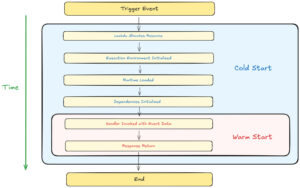Exploring The Opportunities Of Blockchain Development
17/02/2023
959
Table of Contents
Good day everyone! My name is Binh, CEO of SupremeTech. We are an exciting outsourcing development company in Da Nang, which is a coastal city in central Vietnam. I’m super passionate about technology and I’ve been following the evolution of blockchain for quite some time now. I have to say, it’s amazing to see how it’s transforming the way we do business and shaping the future.
I wanted to write this blog post because I believe that blockchain development is an incredibly important topic for companies like SupremeTech, and for anyone who’s interested in staying ahead of the curve in this rapidly changing world. And let me tell you, blockchain development is not just about chain development for cryptocurrency or smart contract development – it’s so much more! The development of applications on top of these chains, which can be used by end users, requires time, effort, and specialized skills. There’s a whole other side to it that involves creating fantastic applications that bring people into the blockchain world and help drive this technology forward.
So, if you’re interested in learning more about the exciting world of blockchain and how it’s shaping the future, read on!
The application development part of blockchain development brings more users to the world of blockchain.

The challenge lies in making blockchain technology accessible and easy to use for people who may not have a technical background. By building applications that meet their needs and solve real-world problems, companies can encourage more people to adopt blockchain and explore its benefits.
One of the key benefits of blockchain is that it provides a secure and decentralized way to store and transfer information. This makes it ideal for a wide range of applications, from financial transactions and supply chain management to secure data storage and voting systems. The potential uses for blockchain are virtually limitless, and this has driven the growing demand for blockchain development services.
What to consider apart from your tokenomics?

When it comes to developing blockchain-based applications, there are several factors to consider. Firstly, it is important to understand the specific needs and requirements of each project, as well as the target audience. This will inform the design and development process, and help ensure that the end result meets the needs of the users.
Another important aspect of blockchain development is scalability. As more and more users adopt blockchain, it is essential that the underlying technology can handle increased demand and maintain its performance. This requires careful planning and consideration of technical specifications, such as the choice of consensus algorithm and the number of nodes in the network.
In addition to these technical considerations, it is also important to consider the legal and regulatory environment. Blockchain technology has the potential to disrupt traditional business models and challenge existing laws and regulations. Companies must be aware of these challenges and take a proactive approach to ensure that their solutions comply with the relevant regulations.
Finally, it is worth mentioning that blockchain development is a rapidly evolving field, and companies must stay up to date with the latest developments and trends. This may involve investing in training and development for employees, attending conferences and events, and collaborating with other companies in the industry.
What are the opportunities there for SupremeTech?

In conclusion, as an outsourcing company, there is a growing demand for blockchain development services. By understanding the challenges and considerations involved in building successful blockchain-based solutions, and by investing in the right skills and expertise, companies can capitalize on this opportunity and help bring more users to the world of blockchain. Whether it is through the development of secure financial transactions, supply chain management systems, or decentralized data storage solutions, the potential for blockchain is immense and the opportunities are endless.
SupremeTech Technical team is going to attend BlockchainFest 2023 held in Singapore in February. I am so excited to meet blockchain developers and entrepreneurs all around Asia at this event. Tune in and check out new content and projects from SupremeTech about the blockchain world. And if you already had a brilliant idea, do not forget our contact form!

Related Blog





















